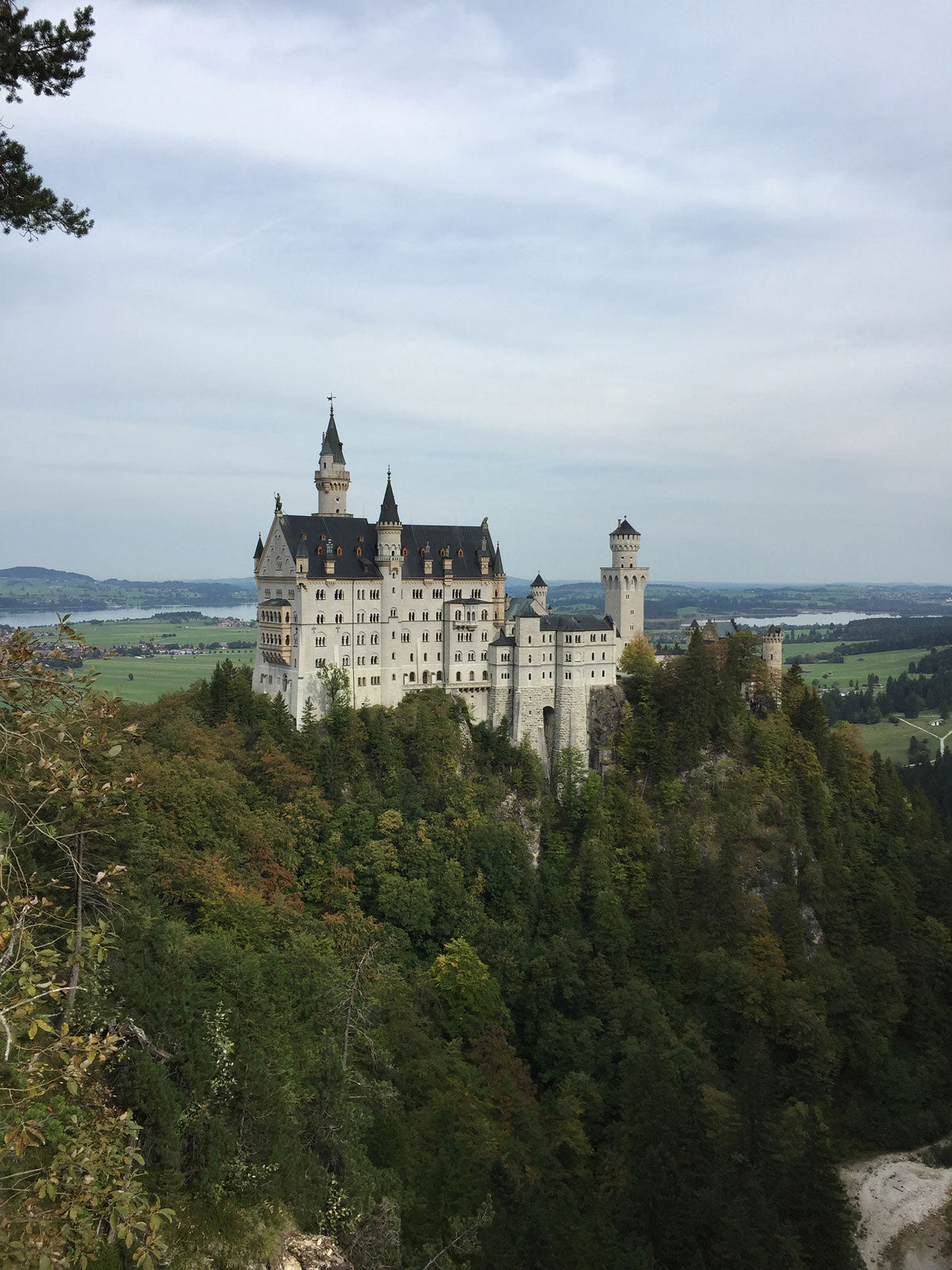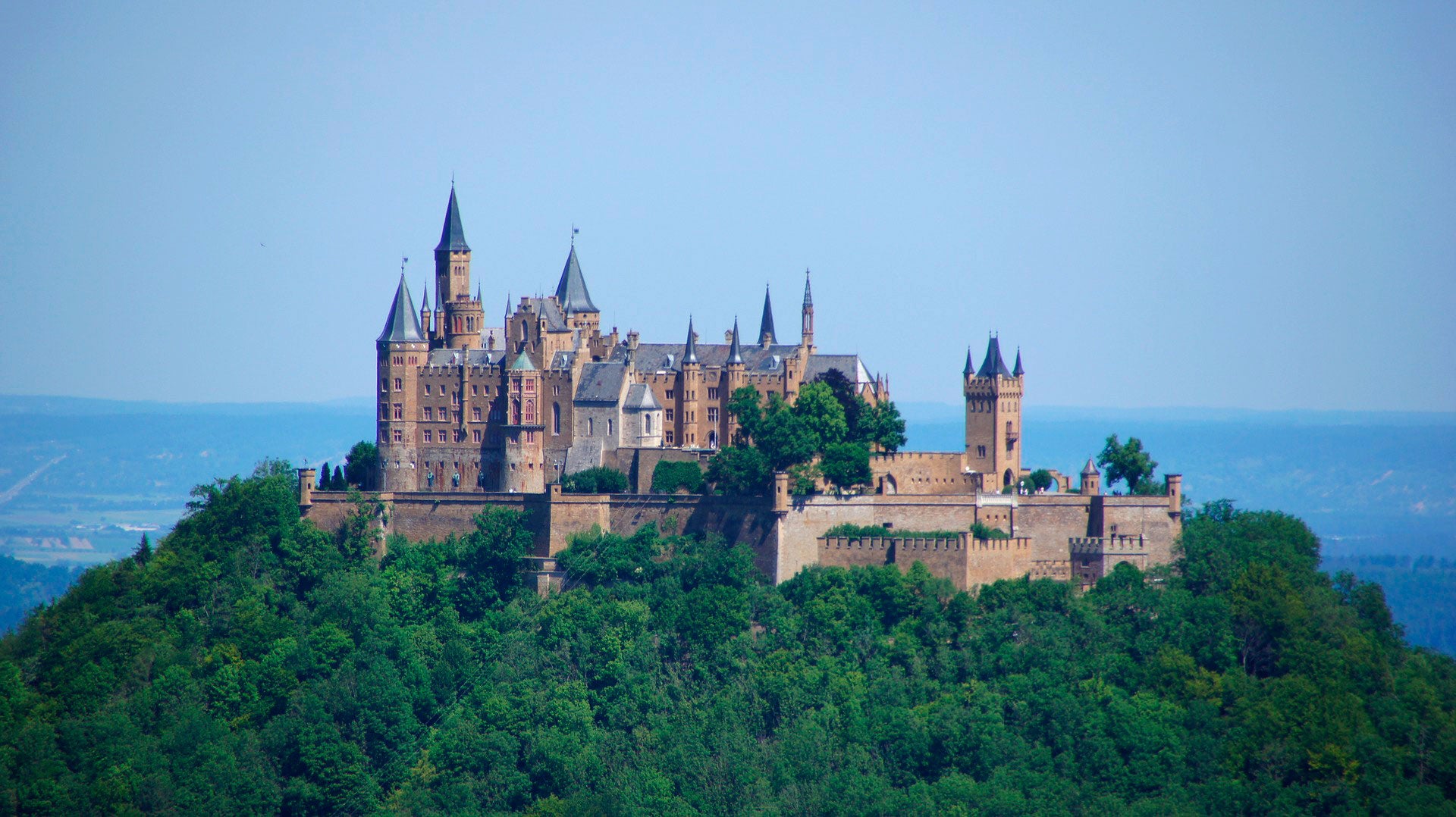Castle tours will never go out of style; visiting places filled with events that were left as the legacy of a time period where monarchies ruled Europe and defined its strength and the aesthetics of the time in every building.
Through heavenly power, clearly reflected in the gigantic constructions that stood at the top in order to reach the sky and clear up their own divinity. Totally timeless, their mysticism surpasses their designs and it gets tangled up in a historic knot where wars, dances, richness, poorness, inequality, ostentation, aspiration, and resentment are just some of the relevant traits that represent them.
Neuschwanstein Castle, Southern Baviera
Better known as the castle from fairy tales, which inspired Walt Disney’s; its style is neo-Gothic and neo-Romanesque. The story begins in 1868, when King Louis II decided to restore two small forts that were in ruins through a project he called “The New Hohenschwangau Castle”, the name Neuschwanstein emerged later on, after the monarch’s passing. This is currently one of the most visited forts in Europe; around 1.4 people visit it each year and up to 6,000 can gather here in a summer day, reason why it requires special care and constant assessment.
The refurbishing of the place began with an 8-meter deep rock excavation, in 1869 the access road was finished and the first stone was placed. The materials employed include cement, bricks, and limestone for cladding. The fortified gate and second floor were the first areas to be ready and sheltered the king, who lived there for many years, although he never got to see the finished project and in 1886, it opened its doors to the public, seven weeks after his death.
Eltz Castle, Wierschem
This feudal castle is at least 850 years old and it has belonged to the same family since it was built.
Its architecture has a military style, popular in the 9th and 10th century German, defensive buildings with great stone walls, which replaced manor houses protected by embankments. Its design includes half-timbered walls, pointy roofs, and eight 35-meter-high turrets, creating a stereotype which today is still valid.
The time from the 6th century through the 9th was great for German castles, under the reign of the Staufen dynasty, they were far more than just houses. An example is the Eltz Castle, which was built in a strategic place, beside a road connecting the lands of Maifeld, the Mosela River, and the Eifel region, important trade routes.

Heidelberg Castle, Heidelberg
Its history begins when the prince-electors (members of the electoral college who had the task of choosing Germany’s emperors) decided to settle in Heidelberg. The first mention of the place dates back to 1225 and it became one of the main settings during the Renaissance.
The buildings (within the castle) are Gläserner, Saalbau, Ottheinrichsbau, Englischer Bau, and Friedrichsbau, purely Renaissance creations. Its façade is worth mentioning thanks to the fact that it forms a ceremonial frame for the courtyard.
The fortress was destroyed by the French at the end of the 17th century during the War of Succession. The attempt to restore it was in vain, since in 1764, two powerful rays impacted consecutively against the building, causing a fire leaving it in ruins.
It was appointed National Monument during the 19th century and, since Heidelberg causes the same fascination to its visitors than it did back when it opened its doors for the first time. It was considered the “eighth wonder of the world” during the 17th century.

Linderhof Castle, Oberammergau, Baviera
This is another project by Louis II, yet it is the smallest of the three castles he had built and the only one he could see completed before his death. It is inspired by the French style and features a strong Rococo trend.
The castle is delicate, romantic to the core, and boasts numerous gardens that delight tourists’ eyes. The French garden greets visitors with a fountain show and its impressive façade.
The king’s bedroom is one of the main attractions, since at some point it was meant to be a common room. The bed is surrounded by a golden balustrade that looks like an altar. Another must is the Venus Grotto (artificial) created for Wagnerian operas.

Hohenzollern Castle, Southern Stuttgart
The current castle is not the original one, since it has been subject to many restorations along its existence. The first reconstruction was made in 1423 as the result of Suabia’s conquering; 40 years later, it arose again when the Hohenzollern family decided to turn it into their home, which also worked as asylum during the conflict years, like the War of 30 Years; later, it was forgotten and left in ruins. In 1846, King Frederick William IV of Prussia had it reformed and in 1867 the building known today was inaugurated, with a neo-Gothic English style.
Built during the Middle Ages (around the 9th century), at the top of the Hohenzollern Mount, 855 meters-high, it was home and shelter, in addition to offering the best views to Prussian and German monarchs.



